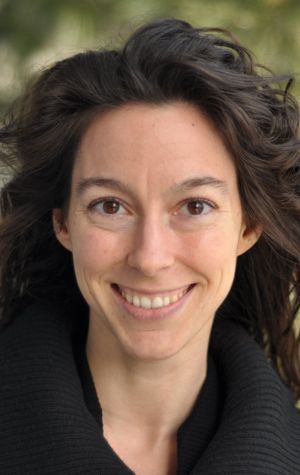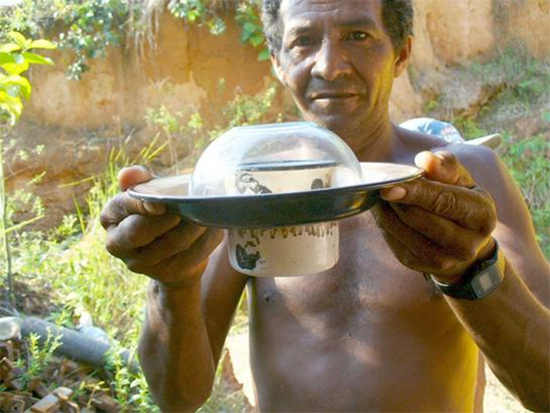Quicksilver for Quick Gold
GRS student works to prevent poisoning of millions

When we think of gold mining, we probably envision a pickax striking a glittering vein in ore or gold flakes glinting through river sediment. We’re unlikely to have even heard about the 15 million men, women, and children poisoning themselves to produce 30 percent of the world’s mined gold. Although the mercury, or quicksilver, used in artisanal and small-scale gold mining (ASGM) causes neurological damage and widespread pollution, miners in developing countries continue to use it—and Kristin Sippl (GRS’16) is finding out why and researching how to give these miners the information necessary to decide on a less dangerous method.
The quickest, cheapest, and easiest method for extracting gold from ore is to mix crushed ore with mercury. The chemical adheres to the gold, forming an amalgam, which is then burned over a blowtorch or open fire to vaporize the mercury and isolate the gold. Women generally perform this task, because it requires more skill than strength, but when they breathe in the vapor, it infiltrates their reproductive systems. When mercury is released into the atmosphere, it’s carried throughout the world by wind and deposited into waterways, where it bioaccumulates in fish (some of which end up in American markets). ASGM releases up to 1,000 tons of mercury every year, and once it is released, it remains in the environment for 2,000 years. Most miners have no conception of the damage they are inflicting on themselves and the ecosystem.
“They don’t always know that mercury is bad,” says Sippl, a Graduate School of Arts & Sciences PhD candidate in political science. “In some cases, they actually think it’s good. In Brazil, for example, they think it enhances virility.” And in many areas, mining is a family tradition that is followed without question. When miners begin to feel the effects of mercury poisoning, they often cannot tell the difference between its symptoms and those of other ailments prevalent in their communities. Even if they attribute their sickness to mercury, most miners depend on ASGM for their livelihoods and see no other options.

Certification and labeling organizations, like Fairtrade International, are working with miners to find sustainable ways to minimize the risks of ASGM. Certification requires miners to follow safe mining standards, with the goal of phasing out the use of mercury. These organizations promote the use of a retort, an affordable technology that captures 95 percent of the toxic chemical. In return for following the certification guidelines, the miners are assured of a fair price for their gold and receive a premium to spend on community development projects. Many miners don’t know about these programs, however, so Sippl is working “to figure out how to improve the flow of knowledge and give miners the information to make decisions.”
Later this summer, Sippl hopes to conduct fieldwork in Tanzania, where she plans to interview miners and local NGOs working with Fairtrade International to learn how they became involved with the organization, what their most pressing issues related to livelihood are, and how they plan to spend the social premium they will be paid when they sell gold under the Fairtrade label. She will also research how they would like to see public and private mining regulations evolve.
“In theory, certification should work, but what miners want is very different from what Fairtrade wants,” Sippl says. “Miners might choose to adopt the rules if they were slightly different, so we have to figure out what they want. I’m trying to find the right mix of tools to get the supply chain under control.”
Sippl is equally interested in what can be done locally to support this mission. Each year, more than half of ASGM-mined gold goes to the jewelry industry. “Every decision that we make has an impact,” she says. Although gold is “deeply embedded in our culture—how many of us wear gold jewelry?—it is a luxury product, so if we can clean up any supply chains, I think we ought to clean up this one.”
A version of this article was published in the fall 2013 edition of Arts & Sciences.
Lara Ehrlich can be reached at lehrlich@bu.edu.
Comments & Discussion
Boston University moderates comments to facilitate an informed, substantive, civil conversation. Abusive, profane, self-promotional, misleading, incoherent or off-topic comments will be rejected. Moderators are staffed during regular business hours (EST) and can only accept comments written in English. Statistics or facts must include a citation or a link to the citation.